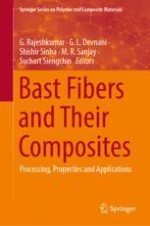2022 | Buch
Bast Fibers and Their Composites
Processing, Properties and Applications
herausgegeben von: G. Rajeshkumar, G.L. Devnani, Shishir Sinha, M.R. Sanjay, Suchart Siengchin
Verlag: Springer Nature Singapore
Buchreihe : Springer Series on Polymer and Composite Materials
